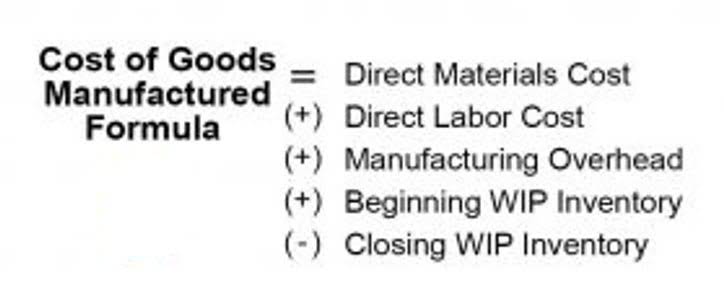
In the event a bond is a callable premium bond, there is a higher likelihood that the bond will be called before or at the call date. DebtBook’s Effective income statement Interest Rate to Call method amortizes the premium on these maturities with that likelihood in mind. Book Value Effective interest is calculated similar to traditional Face Value Interest, but uses different inputs. “Book Value” represents the Par Amount of a maturity plus/minus the outstanding premium/discount amount on the maturity. Let us consider if 1000 bonds are issued for $ 22,916, having a face value of $20,000.
Amortizing the Bonds Discount or Premium FAQs
So let’s go ahead and pause here and then we’ll discuss the amortization of this $4,000 premium. Understanding bond amortization is crucial in accounting, particularly when dealing with discounts and premiums. When bonds are issued at a premium, the cash received exceeds the face value, leading to a premium on bonds payable. The straight-line method amortizes this premium evenly over the bond’s life, impacting interest expense calculations. Conversely, bonds issued at a discount result in cash received being less than the face value, requiring similar amortization techniques. Key formulas include cash interest calculations and amortization rates, ensuring accurate financial reporting and adherence to accounting standards.
Part 1: Tell Us More About Yourself

The issuing corporation is required to pay only $4,500 of interest every six months as promised in its bond agreement ($100,000 x 9% x 6/12) and the bondholder is required to accept $4,500 every six months. However, the market will demand that new bonds of $100,000 pay $5,000 every six months (market interest rate of 10% x $100,000 x 6/12 of a year). The existing bond’s semiannual interest of $4,500 is $500 less than the interest required from a new bond.
- Under the accrual basis of accounting, expenses are matched with revenues on the income statement when the expenses expire or title has transferred to the buyer, rather than at the time when expenses are paid.
- The market value of an existing bond will fluctuate with changes in the market interest rates and with changes in the financial condition of the corporation that issued the bond.
- We calculate these two present values by discounting the future cash amounts by the market interest rate per semiannual period.
- The date of the bond is January 1, 2024 and it matures on December 31, 2028.
- These interest rates represent the market interest rate for the period of time represented by “n“.
- With flexible options and advanced calculations, DebtBook simplifies the amortization process, making it easier for issuers to manage their bond portfolios with confidence.
- In this method, the premium or discount is amortized based on the bond’s effective interest rate over its full maturity period.
Understanding the Effective Interest Rate to Call Method for Premium and Discount Bonds
- For example, a semi-annual bond has two interest payments each year and the number 2 would be entered.
- DebtBook also offers another acceptable form of the Effective Interest method that takes into account the callability of maturities.
- A bond has a stated coupon rate of interest and pays interest to the bond investors based on such a coupon rate of interest.
- These fees include payments to attorneys, accounting firms, and securities consultants.
- For financial reporting purposes, amortizing the discount provides a clearer picture of the bond’s actual yield and the investor’s earnings over time.
- When a bond is issued at a value above or below its par value, a premium or discount is created.
- The Internal Revenue Service (IRS) allows investors to deduct the annual amortization of bond premiums from their taxable income, effectively reducing the amount of taxable interest income.
Under the straight-line method the interest expense remains at a constant annual amount even though the book value of the bond is decreasing. The accounting profession prefers the effective interest rate method, but allows the straight-line method when the amount of bond premium is not significant. The remaining columns of the PV of 1 Table are headed by interest rates. The interest rate represents the market interest rate for the period of time represented by “n“. In the case of a bond, since “n” refers to the number of semiannual interest periods, you select the column with the market interest rate per semiannual period.
- Since a bond’s discount is caused by the difference between a bond’s stated interest rate and the market interest rate, the journal entry for amortizing the discount will involve the account Interest Expense.
- This calculation is then continued through the maturity date of the bonds.
- For the past 52 years, Harold Averkamp (CPA, MBA) hasworked as an accounting supervisor, manager, consultant, university instructor, and innovator in teaching accounting online.
- The Straight Method is preferable when the premium amount is very less or insignificant.
- Note that in 2024 the corporation’s entries included 11 monthly adjusting entries to accrue $750 of interest expense plus the June 30 and December 31 entries to record the semiannual interest payments.
- If the bond pays taxable interest, the bondholder can choose to amortize the premium—that is, use a part of the premium to reduce the amount of interest income included for taxes.
To illustrate the discount on bonds payable, let’s assume that in early December 2023 a corporation prepares a 9% $100,000 bond dated January 1, 2024. The interest payments of $4,500 ($100,000 x 9% x 6/12) will be required on each June 30 and December 31 until the bond matures on December 31, 2028. Once a bond is issued the issuing corporation must pay to the bondholders the bond’s stated interest for the life of the bond. As the timeline indicates, the corporation will pay its bondholders 10 semiannual interest payments of $4,500 ($100,000 x 9% x 6/12 of a year). Each of the interest payments occurs at the end of each of the 10 six-month time periods.

Part 3: Confidence Going Into Retirement
The bondholders are reimbursed for this accrued interest when they receive their first six months’ interest check. For the Airbnb Accounting and Bookkeeping remaining eight periods (there are 10 accrual or payment periods for a semi-annual bond with a maturity of five years), use the same structure presented above to calculate the amortizable bond premium. The amortizable bond premium is a tax term that refers to the excess price paid for a bond over and above its face value.

Reporting Requirements on Tax Returns

It generates an amortization schedule showing each payment’s breakdown between interest and principal, and tracks the remaining bond balance. One of the biggest misconceptions surrounding amortizing discounts and premiums is that they should never be negative. This is not the case; however, you must follow certain guidelines when it comes to reporting negative amounts on your balance sheet if you choose to take them into account in determining net income. This procedure ensures that after the discount or premium is fully amortized, the investment account will reflect the bond’s maturity value. The bond amortization schedule calculator is one type of tvm calculator used in time value of money calculations, discover another at the links below. Journal entries usually dated the last day of the accounting period to bring bond premium amortization schedule the balance sheet and income statement up to date on the accrual basis of accounting.

 Thai
Thai